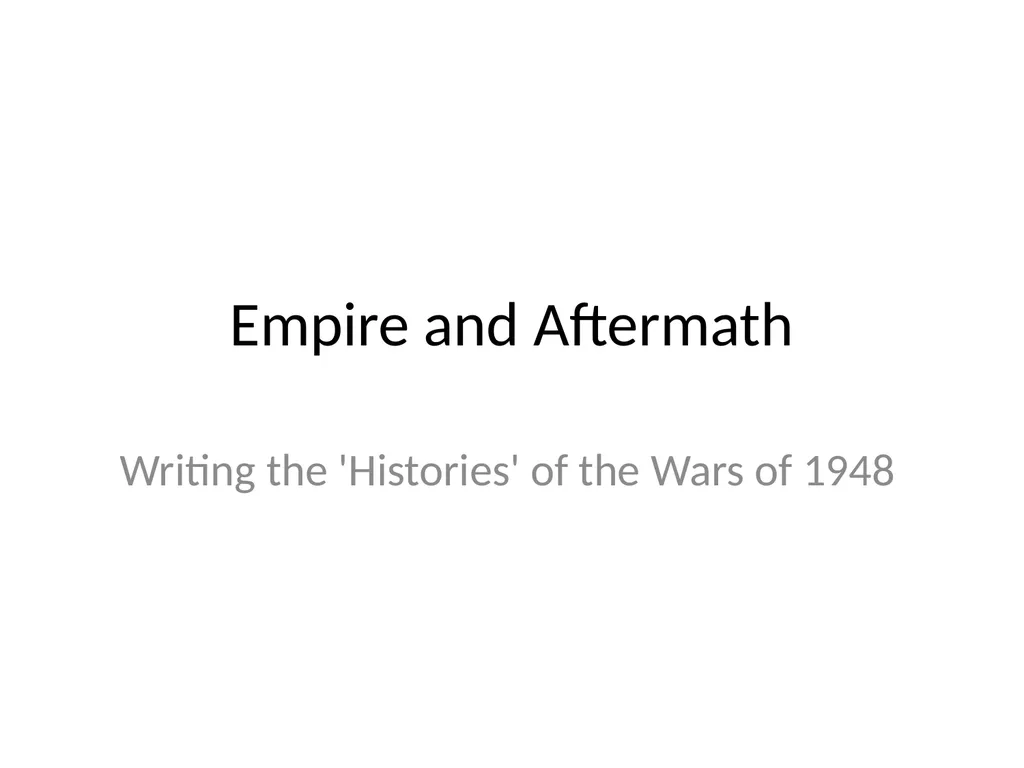
Empire and Aftermath Writing the 'Histories' of
Author: marina-yarberry | Published: 2025-07-18
Description: Empire and Aftermath Writing the Histories of the Wars of 1948 Aims To learn about the creation of the state of Israel. To trace the history of IsraelPalestine from the end of the British Mandate (1945 -1948), through the 1948
Download Presentation
Download the PPT/PDF: Download
Transcript:
Loading transcript…